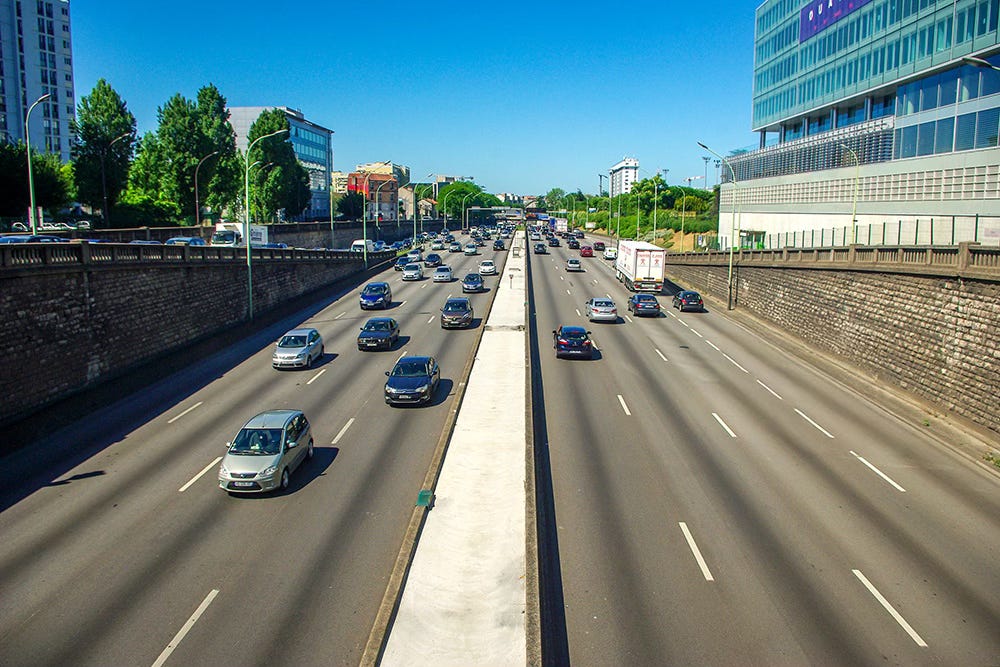The Périphérique: The Ring Road That Will Change How You See Paris
The Cultural Impact of France's Most Iconic Ring Road

The first days of October have brought a change to the daily lives of those using the Parisian Périphérique.
The speed limit, now lowered to 50 km/h (31 mph), is the talk of the town.
Drivers are adjusting, debates are swirling, and everyone is wondering how this will change the experience of navigating this bustling ring road.
The transition is happening in stages, with new signs popping up overnight, reshaping the city's rhythm.
The move to lower the speed limit has sparked quite the debate, with Paris’s mayor at the centre of it all.
The Périphérique has long been a battleground for discussions around pollution, congestion, and the future of urban travel.
Back in 2014, when the limit was first dropped from 80 km/h to 70 km/h, many suspected it was just the beginning.
Whispers of a further reduction to 50 km/h have circulated for years, but few believed it would actually happen—until now.
Seizing the moment during preparations for the upcoming Olympic Games, the city made the bold decision.
Officials claim the new 50 km/h limit will make the ring road safer, reduce noise, and tackle pollution in the crowded neighbourhoods that border the Périphérique.
But here’s where things get heated: the plan also includes a reserved lane, squeezing the already limited space for cars.
While some hail it as a leap towards a cleaner, quieter Paris, others see it as an attack on motorists.
The Périphérique isn’t just a road; it’s the city's artery, pumping life into businesses, commuters, and daily routines.
Slowing it down feels like putting a damper on Paris’s own pulse.
The gradual rollout, to be completed by mid-October, has been carefully orchestrated to avoid complete shutdowns—but it's done little to silence critics.
This change exposes the tangled relationship between Parisians and their beloved ring road.
Is the Périphérique just an outdated urban motorway, or is it something more—a symbol of Parisian grit, adaptability, and, yes, endless debates?
Anyway, I thought this current event was the perfect moment to dive into the story of the Périphérique, that curious urban motorway known to every French person.
What is its history?
Why is it so iconic?
And how does it continue to shape Paris today?
Let's explore this peculiar ring road, from its origins to its future.
As we go along, I recommend grabbing a map or using a geographical app like Google Maps to follow along.
This will help you grasp the area's geography as I delve into the history and culture of the Périphérique.
The Périphérique: Paris’s Urban Jungle on Wheels
The Périphérique (le Périph') is unlike anything you might find in most cities.
A Concrete Loop Unlike Any Other
Imagine a 35-kilometre belt wrapping tightly around Paris, separating the historic city centre from its bustling suburbs.
It’s not just a ring road; it’s a maze of exits, merging lanes, and overpasses that make up an urban motorway, some sections boasting up to eight lanes.
To give you a comparison, London's M25—the famous ring road around the capital—is over 180 kilometres long and sits much further out in the countryside, providing a somewhat more relaxed drive.
The Périphérique, on the other hand, is right at the city's edge, a stark concrete boundary between Paris and the suburbs that lie just beyond.
Keep reading with a 7-day free trial
Subscribe to French Moments Newsletter to keep reading this post and get 7 days of free access to the full post archives.






